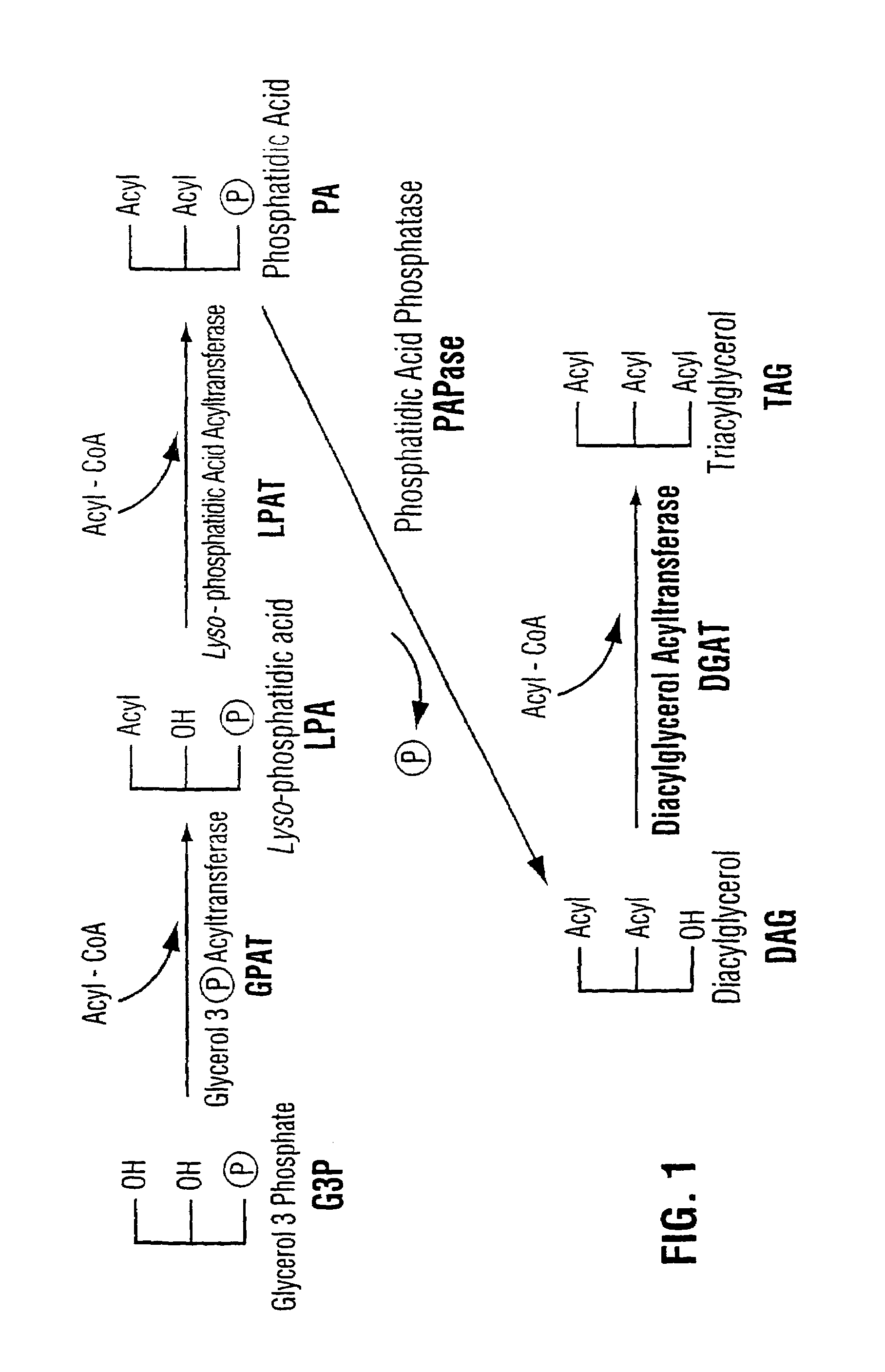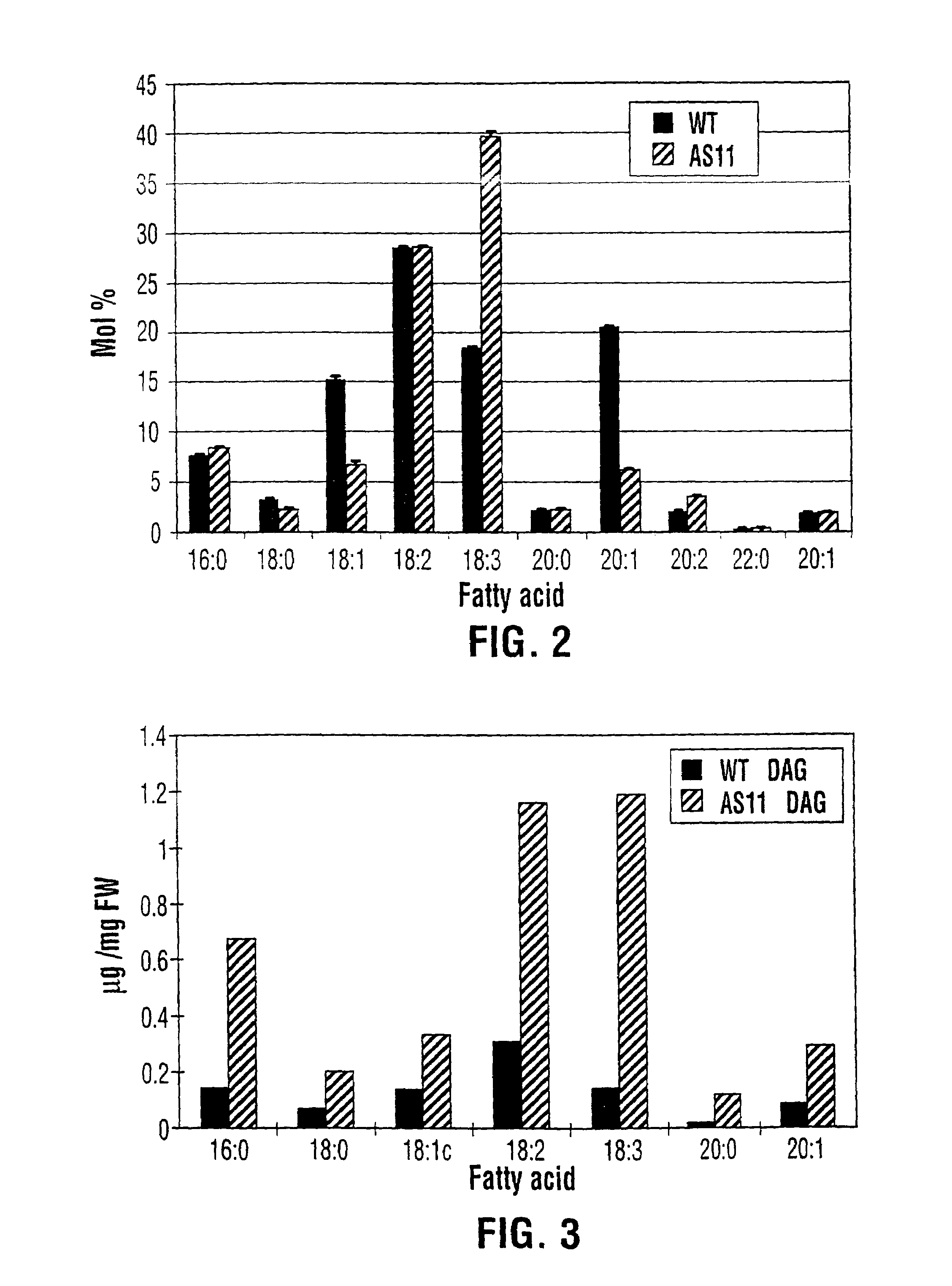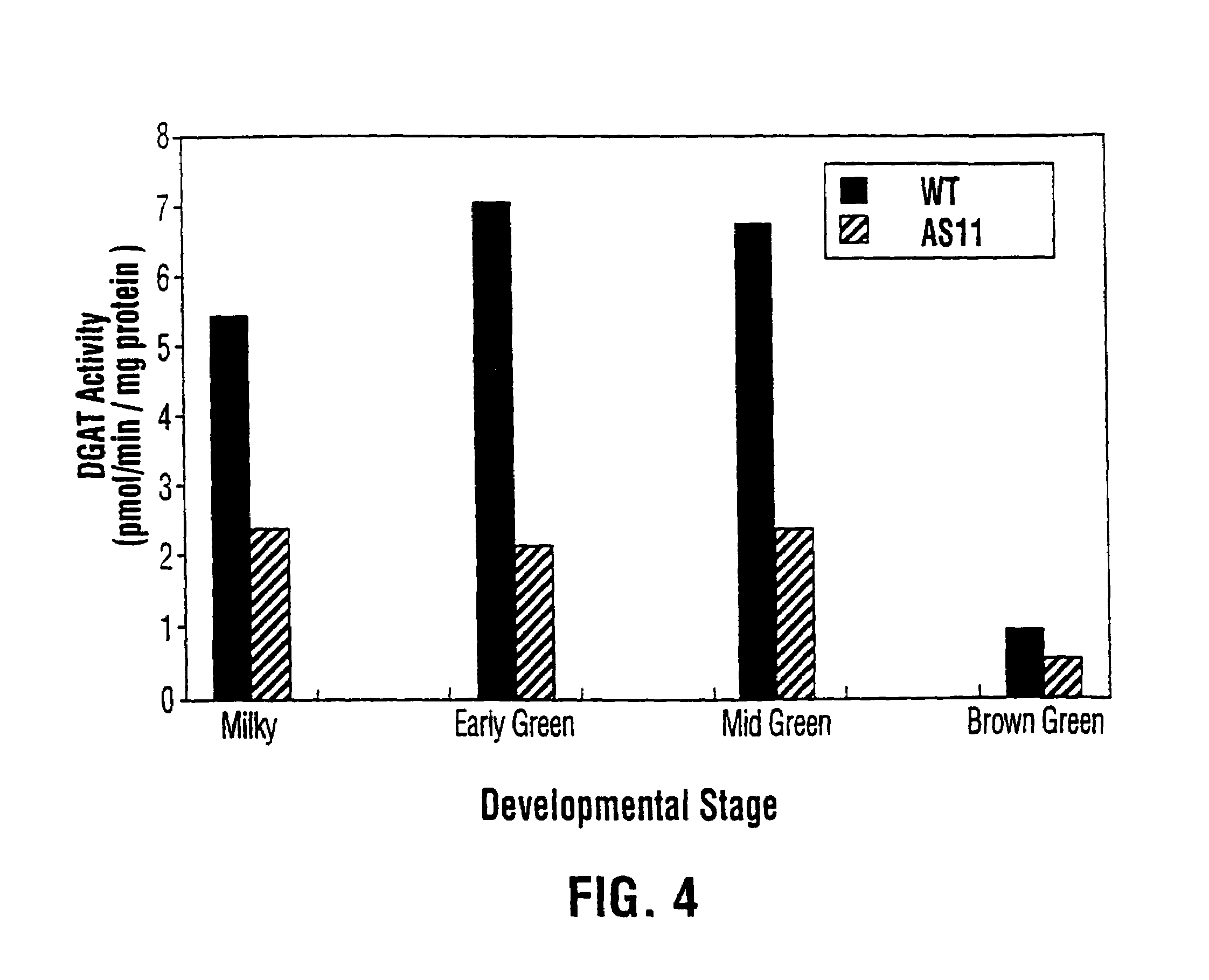Diacylglycerol acyltransferase gene from plants
a technology of diacylglycerol and acyltransferase, which is applied in the field of plant genes, can solve the problems of insufficient detailed molecular characterization of this enzyme, the inability to fully characterize the activity of acyltransferases, and the inability to purify, so as to improve the expression of dgat and the accumulation of seed oil, the effect of increasing the acyl content and enhancing the expression of dgat and seed oil accumulation
- Summary
- Abstract
- Description
- Claims
- Application Information
AI Technical Summary
Benefits of technology
Problems solved by technology
Method used
Image
Examples
Embodiment Construction
[0047]FIG. 1 is a diagram illustrating the Kennedy pathway for the biosynthesis of TAGs in plants. Of the various illustrated enzymes, DGAT is the only enzyme in the Kennedy pathway that is exclusively committed to TAG biosynthesis, and its key role is apparent from the scheme of FIG. 1. sn-1,2-DAG, generated as a result of either the catalytic action of PA phosphatase (EC 3.1.3.4) or CPTase (EC 2.7.8.2), can be used in the biosynthesis of TAG.
[0048]For this reason, the inventors of the present invention decided to investigate DGAT to see if the corresponding gene in plants could be sequenced and cloned and used to modify the seed oil content and fatty acid composition of plants in a way that could be commercially useful.
[0049]The acyl-CoA dependent acylation of sn-1,2-DAG is catalyzed by DGAT (Stymne and Stobart, 1987). In developing and germinating seeds of oilseed plants, TAG accumulation and DGAT activity have been shown to associate with the endoplasmic reticulum (ER; high spee...
PUM
| Property | Measurement | Unit |
|---|---|---|
| pH | aaaaa | aaaaa |
| temperature | aaaaa | aaaaa |
| temperature | aaaaa | aaaaa |
Abstract
Description
Claims
Application Information
 Login to View More
Login to View More - R&D
- Intellectual Property
- Life Sciences
- Materials
- Tech Scout
- Unparalleled Data Quality
- Higher Quality Content
- 60% Fewer Hallucinations
Browse by: Latest US Patents, China's latest patents, Technical Efficacy Thesaurus, Application Domain, Technology Topic, Popular Technical Reports.
© 2025 PatSnap. All rights reserved.Legal|Privacy policy|Modern Slavery Act Transparency Statement|Sitemap|About US| Contact US: help@patsnap.com



